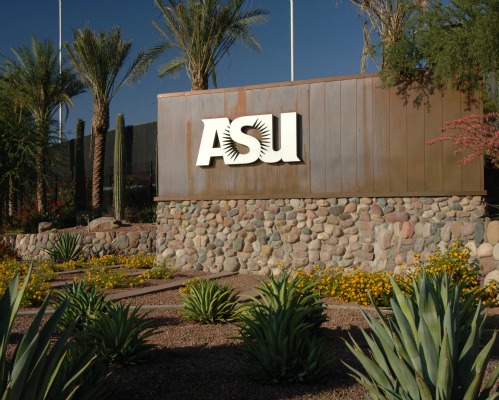Big Business Thinking Will Move Universities Forward, Study Says

Thinking like big businesses may be the key driving force in transforming the nation’s colleges and universities, according to researchers at the New America Foundation, a nonpartisan organization.
The group’s study, titled "The Next Generation University," says bold leadership and fresh ideas based on growth models will set the best universities apart from the rest. The study focuses on six public universities in the U.S. that are excelling in the areas of enrollment, financial aid access, and educational attainment.
“Make innovation trump tradition,” said Michael Crow, president of Arizona State University, during a panel discussion. “Allow innovation to be the thing that’s driving us forward and then once you begin to grasp the concept of what innovation allows you to do, then size is no longer a given.”
The six universities — Arizona State University, Georgia State University, University of Texas at Arlington, University of California at Riverside, University at Buffalo, and the University of Central Florida — were recognized as the "Next Generation Universities" by developing innovative and cost-effective methods to educating their students despite reduced state revenues and increases in tuition.
These universities share a common characteristic of being public research universities. That classification has allowed them to capture research dollars and develop state-of-the-art facilities for science and technology study. The keyword is STEM — and it is propelling Next Generation Universities to step up and lead in providing the curriculum, resources, and space to educate students for future careers in engineering and tech industries, which are projected to grow to nearly 8 million workers by 2018.
In 2010, the University of Texas at Arlington opened a new science and engineering building and hired highly qualified researchers in the areas of computer science, engineering, bioengineering and science. Arizona State University, the largest public university in the nation, cut about 70 programs and introduced new ones focused on earth and space, technology and innovation, and human evolution and social change.
UT-Arlington forged a relationship with the for-profit online course builder and student recruiter Academic Partnerships which resulted in 60 percent of its students taking at least one online course. Arlington’s nursing program, which is the largest of any public university, increased its online enrollment to 5,000 students from the 127 students that began using the program in 2008.
The University of California at Riverside invested $100 million in private funds to build a new medical school to be competitive with other UC campuses. Douglas Mitchell, interim dean and professor in the School of Education, believes a lack of highly achieving students at Riverside is not the problem, rather it is important to take current and incoming students at the university and "make them elite.”
The study also focused on emerging learning models to access a large number of students. Not afraid of large student populations, each of the six universities has increased their campus communities by offering online and hybrid courses, as well as traditional lectures to give their students a variety of learning options to best fit their schedules.
To stave off tuition increases and increase higher education access to underrepresented and minority groups, some of these universities have focused on offering alternative funding models and creating partnerships with local community colleges to give the greatest amount of students access to a college education wherever they are in their studies.
Georgia State University’s “Keep Hope Alive” program, which offers $500 grants to students who lose the state-lottery funded HOPE scholarship, retains those who would otherwise drop out due to the loss of their scholarship funds. The university also offers an incentive program that pays work-study dollars to students to be tutors for classes in which they received a high GPA.
GSU also has begun awarding grants of up to $1000 to help pay off remaining debts students owe at the end of the semester.
Both Arizona State University and Central Florida have boosted relationships with local community colleges and worked to accept more transfer credits so two-year college students can move seamlessly to four-year universities and graduate on time.
The study’s authors ultimately concluded that for colleges and universities to innovate, they must think like some of the most successful corporations in the nation by focusing on innovation, investment, and making themselves competitive. Increasing student population and campus size to reflect specialized study — like ASU’s six campuses — as well as making the transfer from community colleges to universities easier and focusing on degree completion will realign universities for a 21st century workforce.




